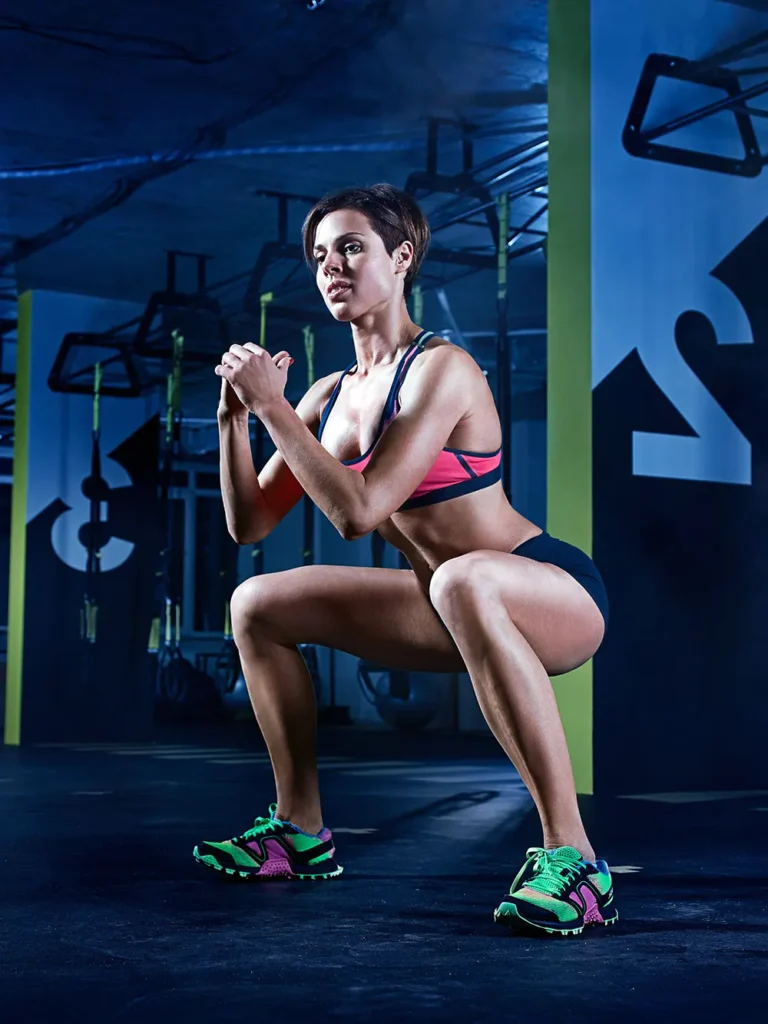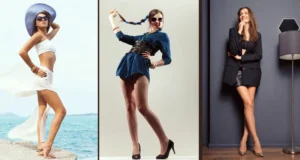Female athletes frequently wear significantly less attire than their male counterparts during competition and promotion. While heat considerations, mobility needs, or personal style may play some role, the truth is more complex. Practical performance benefits alone do not fully explain the sexualized and skimpy outfits prevalent in many female sports.
Deeper issues of objectification, lack of respect, unfair treatment, cultural attitudes, and limited choice shape the clothing norms for female athletes. Their attire is more a symptom of sexism than a fair or empowering choice. Though marketed as empowering or appealing, the meager clothing disguises the deeper disenfranchisement of female athletes in favor of exploiting them for profit and pleasure.
In short, female athletes do not simply wear less for comfort or style but because of the overt and covert pressures to promote their sexuality over skills or accomplishments. Practical concerns are not the primary drivers of their uniforms and develop only as a defense or rationale for more fundamental issues.
Why do female athletes wear so little?
Practical reasons related to performance
Female athletes show a lot of skin partly for practical performance reasons. In sports played in hot weather, like beach volleyball, more revealing clothes may keep them cooler and more comfortable while moving around freely. Less fabric means less heat and easier mobility.
However, heat and mobility are not the main reasons for skimpy outfits in all female sports. Not all sports where female athletes wear little clothing actually require it for maximum performance in hot conditions. Practical performance benefits only partly explain revealing uniforms.
While comfort and unfettered movement may play some role, practical performance needs do not fully account for why female athletes often wear very little. Heat and mobility rationale only applies to select sports. Market appeal, objectification, and cultural stereotypes seem to primarily drive the sexualized and skimpy outfits, not laser-focused performance needs.

Pressure and double standards
Female athletes often show a lot of skin due to pressure and unfair treatment. Coaches, sponsors, teams, and sports groups frequently pressure female athletes into wearing revealing clothes to attract attention. However, female athletes get criticized no matter what they wear – if they don’t show enough skin or if they show too much.
In contrast, male athletes rarely face these kinds of clothing-related pressures and double standards. They have more freedom and less criticism over their athletic attire.
Female athletes are constantly forced into skimpy outfits against their will or tastes in order to appeal to audiences. They are damned if they do and damned if they don’t in meeting unfair beauty standards. Male athletes, on the other hand, typically face no such pressures over their sports garments.
Sex appeal and marketing
Female athletes show a lot of skin primarily to sell their sports. Revealing uniforms highlight their bodies and sexuality in order to promote themselves and attract audiences. This brings in more female fans and guys who want to ogle women’s physiques. The belief that “sex sells” results in skimpier and more sexualized outfits.
Female athletes wear skimpy clothes mainly to exploit their looks, not their talents. Their bodies are used as a marketing tool to draw interest in the sport. Revealing gear is meant to stir attraction to women’s figures, not athletic skill. Sex appeal is utilized to promote the sport by objectifying female athletes.
Limited choices
While female athletes may have some options for their uniforms on paper, their choices are very limited. Either they go along with skimpy team outfits or face problems for refusing to do so. Female athletes have little ability to make their own autonomous decisions over what they wear while competing.
Though options may technically exist, meaningful choices do not. Female athletes must conform to revealing and sexualized clothing or face consequences for not adhering to those unfair standards. Their voices and agency over their own attire seem marginal at best.
Even when options are offered, female athletes have little real choice or say in the clothing they wear during competition and promotion. They must submit to skimpy uniforms or face difficulties advocating for coverage and comfort. Autonomy over their own attire is highly limited.
Limited choices feed into the broader pressures and double standards female athletes face. Their voices are marginalized as their bodies become the primary focal point, appealing more for interest in their sexuality than talent or skill. Limited choices, in other words, stem from and enable the objectification of female athletes.
Objectification and lack of respect
Female athletes wear little because how they are treated as sex objects, not skilled athletes. An excessive focus on their bodies and sexuality objectifies them as women, not competitors equal to male athletes.
Their talents, abilities, and accomplishments are overshadowed by discussions of their looks. Female athletes are disrespected and disregarded as whole athletes in favor of promoting their sexuality to attract interest and profit from audiences.
Their skills and achievements fade into the background, eclipsed by their figures and physiques. Respect for female athletes is lacking as they are predominantly viewed as objects meant to appeal for exploitation and pleasure-seeking, not the equal competitors they are.
Female athletes’ attire is skimpy because of the objectification and lack of respect they encounter. Their talent and skill as competitive equals to male athletes are obscured by an unchecked focus on their sexuality. Their accomplishments and merit fade as their bodies become the primary specter on display.
Objectification robs female athletes of dignity, while a lack of equal respect relegates them to objects, not whole competitors. Limited attire is a symptom and enabling factor of these broader disrespects. Sex appeal is prioritized over athletic achievement, skill, and ability.
Cultural attitudes
Female athletes wear little because of broader cultural views on women’s bodies, sexuality, and proper attire for women. Societal attitudes tolerate and even promote revealing clothing for females in a way that does not extend to males.
Cultural stereotypes of women as sex objects, first and foremost, shape what is deemed acceptable or appealing attire. Views on appropriate garments for females emphasize sexuality and figure over comfort, ability, or role. These stereotypical attitudes enable and drive the disproportionate focus on female athletes’ looks.
Cultural tolerance for female revealing and dismissing sexualized limitations on women justify skimpy uniforms. However, female athletes who refuse these unfair and demeaning standards or push back for more coverage and dignity face criticism as unfeminine or less attractive. They cannot win in meeting objectifying cultural attitudes.
Sexism in society and culture at large contributes to why female athletes wear little. Broader stereotypical views of women as sex objects which must appeal through revealing attire, trickle into and influence female sportswear.
While female sexuality is promoted and normalized in expected limited attire, female athletes face the consequences for not adequately fulfilling these objectified roles. They cannot advocate for themselves without reprisal due to cultural attitudes positioning their worth as derived from their utility and appeal for male pleasure.
What is the history behind female athletes’ uniforms?
Over the years, women’s sports have changed a lot, and the uniforms female athletes wear have evolved alongside the strategies themselves.
Early Modesty and Femininity
Early female athletes wore clothing regarded as suitably feminine and modest, reflecting the cultural attitudes of the time. Sports were seen as unwomanly, so uniforms emphasized femininity.
Attracting Interest Through Revelation (19th to early 20th century)
In the late 19th to early 20th century, sports decline cycles led to more skimpy outfits to attract audiences. Tennis, golf, and swimming costumes became briefer. Public interest was more focused on women’s figures than their abilities.
Limited Progress and Double Standards (Mid-20th Century)
After World War 2, technological fabrics produced more lightweight and form-fitting clothing. But double standards continued – women’s suits had to balance revelation and coverage in a way men’s did not.
Youthquake and Titillation (1960s)
The 1960s saw more progressive uniforms, but a “youthquake” led to miniskirts and go-go boots entering sportswear. While markets framed this as liberating, it primarily served the sexual interests of young male audiences.
Title IX Challenges and Persisting Objectification (1970s)
In the 1970s, Title IX led to more women participating in sports. This challenged conservative attitudes, but skimpy uniforms persisted in filling “sex symbol” roles. Limited choices and objectification undercut empowerment.
Hyper-Sexualization and Lack of Consent (1980s-1990s)
From the 1980s-1990s, revealing designs grew more overtly sexualized. There was a rise in bikini competitions for female athletes and models. Male gaze found more outlets, while female athletes had little control or consented over their hyper-sexualized representation.
Complex Debates and Lingering Issues (Today)
Today, there are more options and diversity, but issues remain. Double standards, lack of dignity, unfair pressures, and limited choice continue to shape women’s sportswear in ways not seen for male athletes. Views of women as sex objects primarily still saturate markets and media.

What was the first female athletic uniform?
The first modern Olympic Games took place in 1896, reviving the ancient Olympic Games but were only open to male athletes. Female athletes were barred from competing until 1900.
In 1900, the second modern Olympics allowed female participation for the first time. Female athletes were required to wear ankle-length dresses covering arms and legs, reflecting conservative views of the time.
Challenging Expectations and Pushing Boundaries
For years, these modest dresses shaped expectations and norms for appropriate female athletic attire. They represented sexist double standards connecting women’s sports to emphasizing women’s modesty over ability.
Over time, as female athletes gained more opportunities and status, they challenged these sexist expectations around their sportswear. They pushed boundaries on what was deemed suitable or proper attire for female competitors.
Debates and Remaining Limitations
Female athletes began choosing comfortable and stylish clothes rather than restricting themselves to the modest dresses initially required. They rebelled against the construing of their attire as a reflection of virtue over skill or empowerment.
As hemlines rose in a general fashion, sports hemlines followed suit for female athletes. Skirts, shorts, knee-length bloomers, and leggings became more accepted and commonplace. Though double standards persisted around appropriate reveal, more fitted and form-hugging designs also emerged.
Today, while there are more options for female sportswear, complex issues remain around limiting choices, objectification, disrespect, and lack of consent in how some female athletes are represented through their uniforms. Debates surrounding what constitutes empowerment versus exploitation of women’s bodies persist.
Though progress has been made, the origins of female athletic attire in modest conservatism highlight how far we have yet to achieve a truly fair, inclusive, and empowering representation of women in sports. The history reflects male interests more so than women’s voices or needs.
FAQ
Which sports have the most revealing female uniforms?
Beach volleyball, Gymnastics, Figure skating, and Tennis have the most revealing female uniforms.
What is sexploitation in sports?
Sexploitation in sports refers to the objectification and sexualization of female athletes, often through their clothing and media coverage. This can include using revealing uniforms as a marketing tool, emphasizing the athletes’ physical appearance rather than their athletic abilities, and using sexualized images of the athletes to promote the sport.
Why do girls have to wear skirts in sports?
Girls do not necessarily have to wear skirts in sports. However, some sports like field hockey and lacrosse traditionally have female athletes wearing skirts or kilts as part of their uniforms. The reasons behind this tradition are unclear and may have cultural or historical roots.
What is the most male dominated sport?
In general, sports such as football, basketball, baseball, wrestling, boxing, and hockey are often considered to be traditionally male-dominated due to their history, cultural significance, and high participation rates among men. However, in recent years, there has been a push to increase representation and opportunities for female athletes in these and other sports traditionally dominated by men.
What sports aren’t split by gender?
There are some sports where men and women compete together. These can include mixed doubles or pairs competitions in sports such as tennis and badminton, as well as some forms of mixed team ball sports such as korfball, Baseball5, coed softball, quidditch, dodgeball, touch/tag rugby, wheelchair handball, and wheelchair rugby. Additionally, in some activities, such as adventure racing, teams must include at least one member of the opposite sex. However, in many sports with significant physical differences between men and women that can affect performance, such as running, swimming, and weightlifting, there are separate divisions for men and women.



